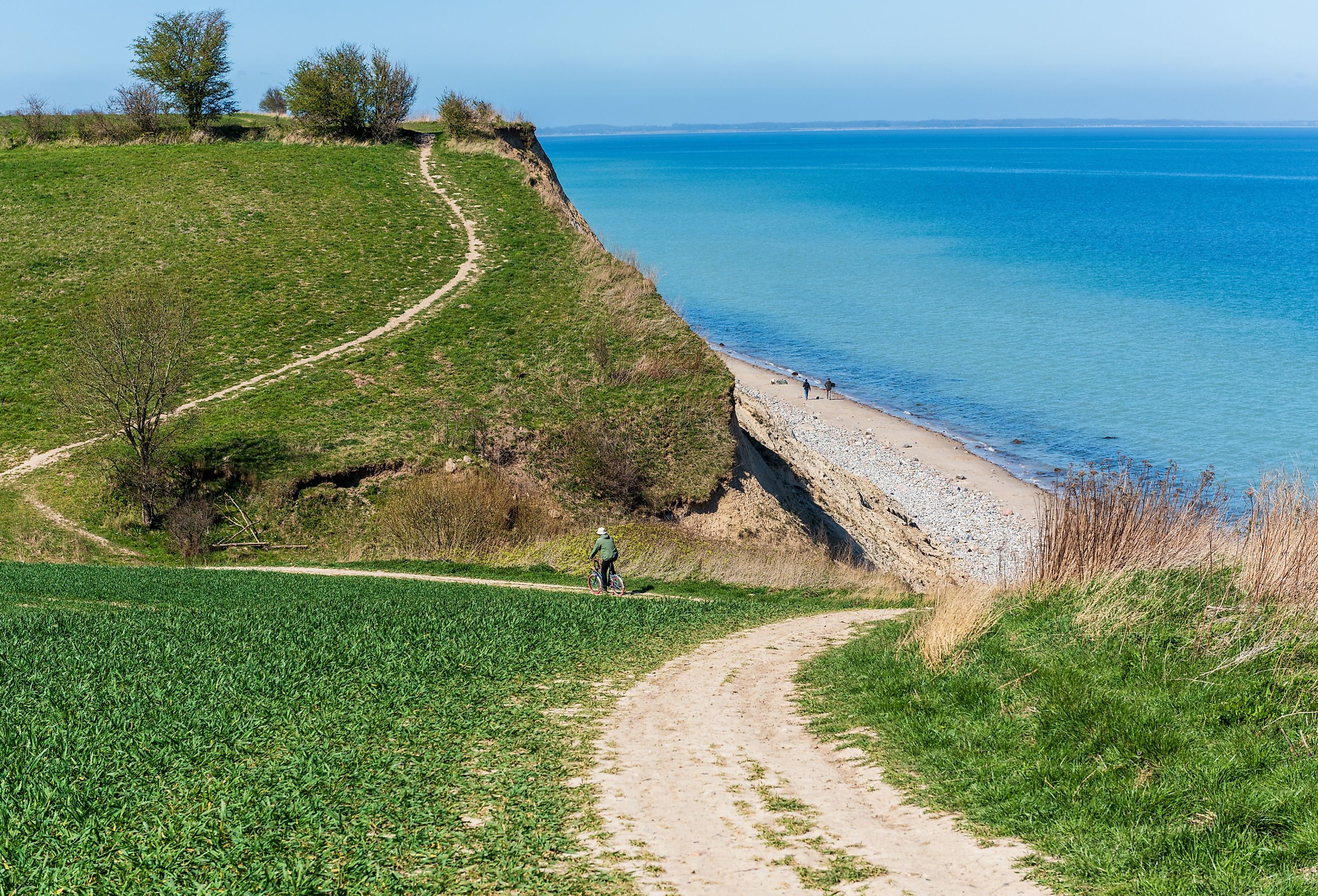
Kiel Bay
Covering an area of 3,382 km2, Kiel Bay is a broad extension of the Baltic Sea that is bounded by the shores of Schleswig-Holstein in Germany and the islands of Denmark. The bay is a bustling hub of both trade and travel. Thousands of cargo ships and commercial cruisers come and go each year, not to mention the daily ferry rides available to those looking to travel to the Danish islands of Lolland, Langeland, Als, and Ærø
Geography
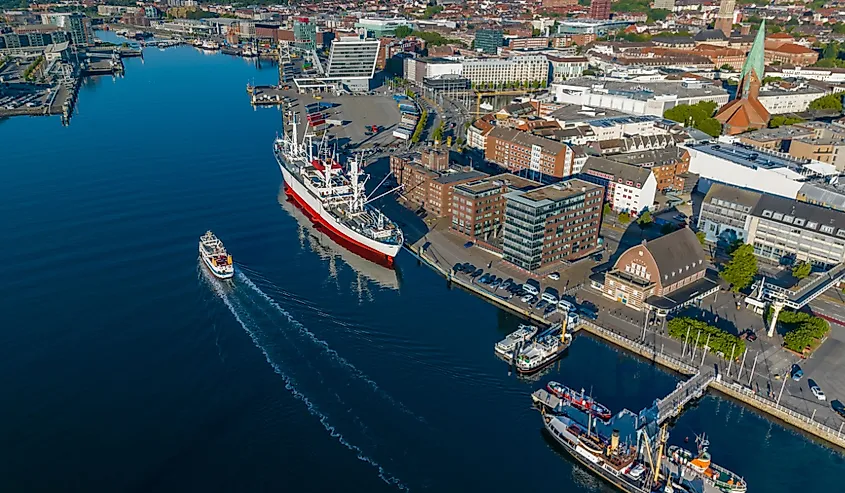
Kiel Bay is relatively shallow, with a depth of around 20 meters. The southwest shore of the bay is the coast of Schleswig-Holstein. The Schlei inlet flows out from this region, constituting a brackish estuary. At the upper reaches of the Schlei inlet lies the city that shares its name, Schleswig. Along this same coastline, two additional compact bays are found: Eckernförde Bay and Flensburg Fjord. The Danish islands of Als, Ærø, and Langeland are situated to the north. At the heart of Kiel Bay, formerly known as the Kaiser-Wilhelm-Kanal, the Kiel Canal connects the Baltic Sea with the North Sea. This 98km long freshwater canal saves commercial and cargo ships a whopping 460km, avoiding the circumnavigation of the Jutland Peninsula.
Marine Life
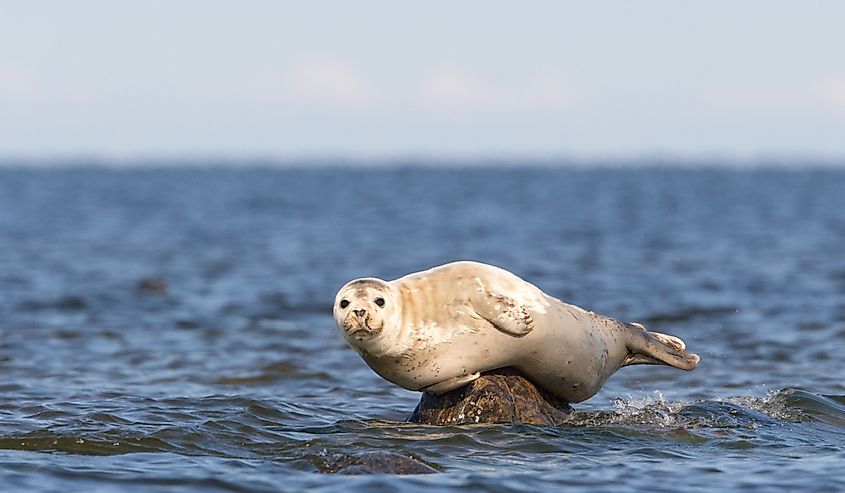
The Bay of Kiel hosts 30% of the total number of species in the Baltic Sea. With 818 species, this bay is the fourth most bio-diverse in the Baltic Sea. It has three marine mammal species, including grey seals, harbor seals, and harbor porpoises. Other Baltic Sea mammals make their way into Kiel Bay, such as the ringed seal and the European Otter. Although not native to the Baltic, oceanic mammals can also occasionally be sighted, such as the fin whale, minke whale, humpback whale, white-beaked dolphin, and the common dolphin.
Brief History
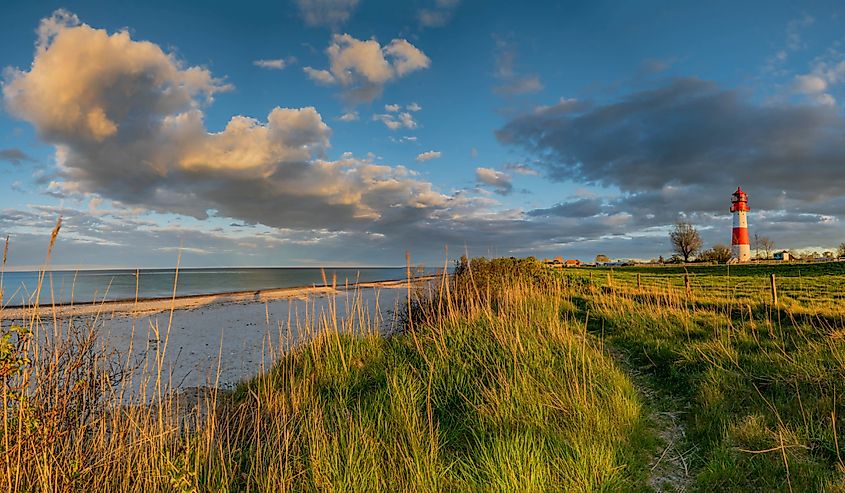
A millennium ago, this area stood as a Viking stronghold centered around Haithaby near present-day Schleswig. Today, it has achieved recognition as a UNESCO World Heritage site. The protective walls of the settlements, known as Danevirke, remained in use until the mid-19th century, serving as a defensive line for the Danes against the Prussians. Until then, the region known as Schleswig was part of Denmark, so vestiges of Danish influence still endure. Notable among these are a substantial Danish minority, Danish architectural influences, and a flow of Danish visitors drawn by border shops and other attractions. Overall, much of the land traffic between Denmark and Scandinavia in general and Central as well as Western Europe traverses through this area. Post-war marine munition dumpsites exist and are acknowledged by authorities, but their actual extent and effect on the environment are primarily unknown. Besides the unexploded ordnance from combat and bombing, all kinds of munition from onshore munition depots have been dumped after World War II in nearshore areas. The German dumpsite in Kiel Bay' Kolberger Heide' is an active environment threat with a massive content of discarded munition material amounting to more than 1,000 munition objects in the form of ground mines, torpedoes, and aerial bombs.
Human Settlements Along Kiel Bay
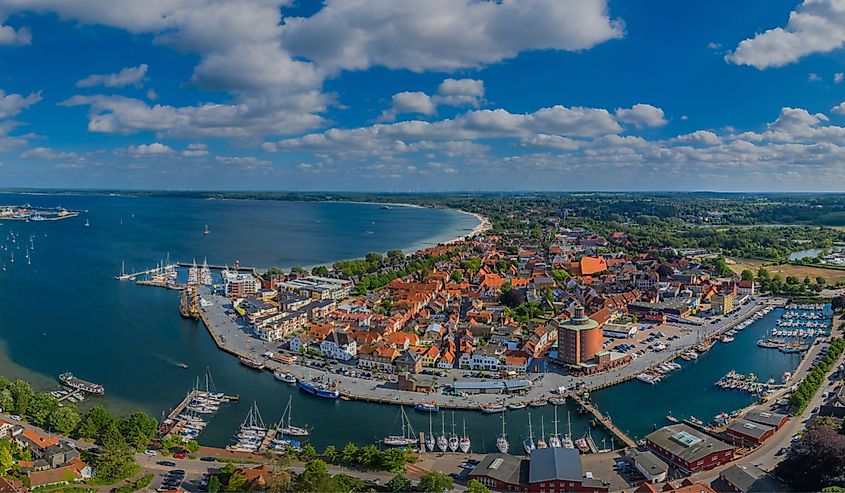
Kiel Bay is home to thousands of people of diverse cultures and religions, influenced by the bay's unique features and Germany's rich immigration heritage. For centuries, humans have settled and derived their livelihood from the bay, with the first settlement dating back to the Viking Age and beyond. Today, several populous cities and settlements are located along the Bay of Kiel. Kiel gives its name to the bay and is the most populous city along it, with 247,548 people. It is one of Germany's most important ports. Some other notable cities along the bay include Eckernförde (22,798 people), Kappeln (9,768), Laboe (5,207), and Lütjenburg (5,522).
Economy
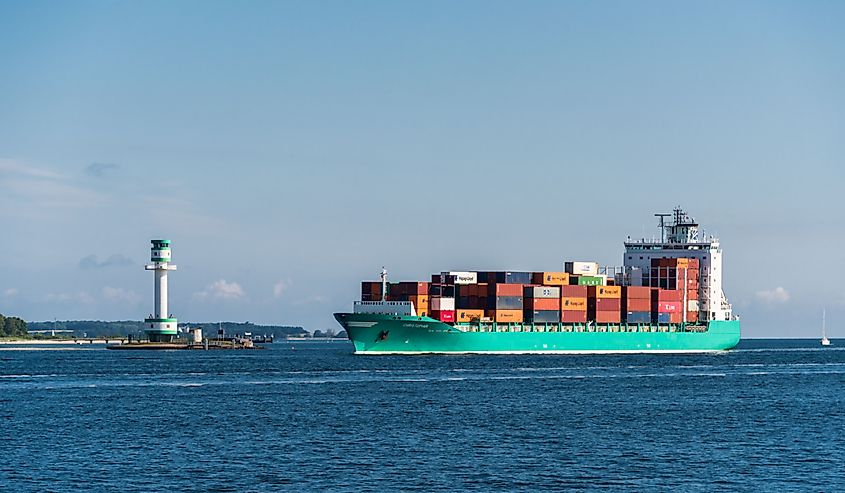
This Baltic Bay is renowned for sailing and is crisscrossed by cruise ships & commercial maritime traffic daily. Sea traffic is also notable here, with Kiel's status as one of Germany's largest ports. Additionally, the Kiel Canal's passage through Schleswig-Holstein provides ships with a direct route that bypasses the Jutland peninsula, connecting the Baltic and North Seas. The Kiel Canal is the World's most frequented artificial waterway, with an average of 32,000 ships annually, 90 each day, transporting approximately 100 million tonnes of goods. Kiel is also a leading center of German high-tech military and civil shipbuilding. Howaldtswerke-Deutsche Werft is a shipyard founded in 1838 to construct submarines and is famed as the birthplace of the first Gemran Brandtaucher in 1850. Today, it is a subsidiary of ThyssenKrupp Marine Systems, the leading German group of shipyards. The Port of Kiel is an important port for cargo and passenger shipping from Germany to Scandinavia, the Baltic States, and Russia. Major passenger ferry operators are Stena Line, DFDS Seaways, and Color Line. In 2005, Kiel's GDP per capita was €35,618, which is well above the national average of Germany and 159% of the European Union average.











